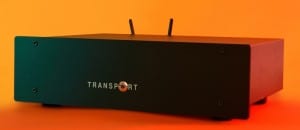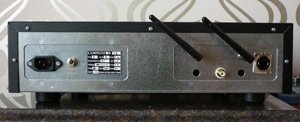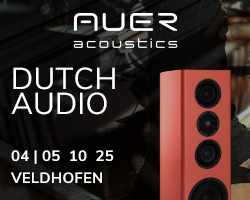A quick search on any established hifi forum will confirm that enthusiasts have been long been arguing about the role, importance and perceived effect of different digital transports on sound quality. This subject has provoked involved debate pretty much since Arcam first unleashed the ‘Black Box’ standalone digital to analogue converter on consumers in 1989 and now has new legs as more audiophiles make the switch from silver to hard disk to store the bits to fire at their DAC chip of choice. 
It’s arguably a discussion with more relevance today than before. Even the most basic compact disc spinners are designed with that specific job in mind. These ears hear far smaller differences between two CD transports built for the task in hand than between differing implementations of PC audio where a quiet, vibration free dedicated digital transfer just wasn’t part of the original design brief. I know this at my cost – I’m sure we’ve all found that it’s pretty easy to get crap sound from a laptop. Advances in technology and the demand for a purpose built solution has given rise to the file streamer, but while Sonos play Pepsi to Squeezeboxes Coca Cola in a lifestyle tussle for your front room, cynics grumble about switching power supplies and low rent components. I can relate to this. I’m a huge fan of the convenience of my Sonos box, but it’s not uncommon for me to lower the ‘CD is dead’ flag and reach for a jewel case when I really want to hear what my system is doing.
Enter Poland’s Lukasz Fikus of Lampizator fame. Modder extraordinaire and ruthless blogger turned boutique manufacturer, Lukasz has spotted a high quality file streamer shaped gap in the market and added this Transport to his well received line up of DACs. The workmanlike black box incorporates the Logitech Squeezebox Duet technology and builds a unique machine around it, with the valve output stage, with valve power supply, that takes care of the conversion to SP/dif grabbing most of the headlines. Mods to the Duet internals include a new super clock and high end power supply, but the unit retains the Squeezebox hi-res playback (96/24), U.I. and access to internet radio, Spotify and other music subscription services, even shipping with cute Logitech remote control. Familiar territory, and to this end set up was a snap. I was happily scrolling through familiar artwork within just a couple of minutes of unboxing. 
To business and a head to head with my Sonos/Audio GD Digital interface set up. The two box Chinese re-clocker adds body and weight to the bit perfect ZP90 output and serves me adequately day to day. The sources are plumbed in to a MHDT Havana DAC with Kimber digital cable and Audio Note’s Oto amplifier and AN-E loudspeaker combination are trusted to relay the findings.
I’m enjoying a bit of a dub revival at the moment and Alborosie’s ‘Kingston town’ has a real swagger about it. The first listen through on the Sonos is enjoyable enough, but almost totally eclipsed by the Lampizated re run. The second play has more authority and presence – it seems larger and more potent. I repeat the exercise and notice that there’s more detail and tune in the lower register with the new arrival. The bass line has a new emphasis and seems less one dimensional and more open than before, bringing in a swing and a melody of it’s own that’s now easy to notice. A journey through David Rodigan’s ‘Fabric’ compilation reinforces these findings. It’s an easy call. The Lampizator Transport is a more engaging, musical listen. 
The Audio GD SP/dif converter has both coaxial and USB input and so a direct comparison to laptop playback is possible. A round of A/B listening with Tunng’s well recorded ‘Good Arrows’ confirms what we’ve already established. The Polish streamer is a detail-demon and seems to pull more out of the file than my netbook/converter can. It produces a clear, easy sound that seems to distinguish better between separate sounds on the recording than either of the other sources. Two wins in a row.
Impressive stuff, but hardly surprising given the entry fee of the units under scrutiny. A better test would be against a top drawer CD transport and the digital coaxial input on Resolution Audio’s Opus 21 player allows us to do just that. The Transport is plugged into the Opus 21 and comparisons can be made to the original compact disc and ripped lossless media file at the press of a button on the remote.
After a few tracks it was clear that this was going to be a much closer test. Many renditions were virtually indistinguishable from each other and any differences were noted down as an edge more warmth here, or a touch more detail there. A percent or two difference! I asked a good music-lover friend of mine who is less OCD about such things to help me work out what I was hearing. We covered the display of the unit and he switched between the two, playing tracks from one source then the other. Any positive differences noted in this blind test were both always in favour of the Lampizator Transport and almost too minor to be of concern. Another win, but a narrow one. I’m happy to concede that a more resolving, higher end system than mine may have highlighted bigger differences and the arrival of the Lampizator DAC 4 (more on that soon) bought further improvements when pitched against the American spinner come DAC.
And so we’re almost back to where we started. How important is the role of the transport in the audio chain? This might be where the Transport stumbles a bit. At £2,500 it’s very expensive and it cuts a pretty drab figure in a boxy, bolt together homebrewesque outfit, that hardly screams top of the food chain hifi royalty. Some enthusiasts wouldn’t dream of spending this much money on just a transport and others won’t need anything better than my everyday solution that the Lampizator bested so easily. Many might look to buy cheaper and apportion the balance to better the components downstream. In doing so they might well get a better sound for pound improvement.
But in making those comments I might be missing the point. I’d imagine that this has been designed for the listener that has moved away from CD replay and wants to be sure that they are feeding a high end system with the very best signal they can afford – the same listener that would drop multi thousands on a dedicated CD transport five years ago. Lukasz Fikus thinks this is the best sounding dedicated transport in the world. It has prettier, better finished competition in the form of, for instance, the Linn streamers, but after spending some time with this clever coupling of innovative technology and excellent interface it’s not that easy to disagree with him.
Price £2,100
Author – Jake
Two reviews of the Lampizator DAC will follow shortly from Jerry and Jake.
Want to read more hifi reviews?


































































































































































































You must be logged in to leave a reply.